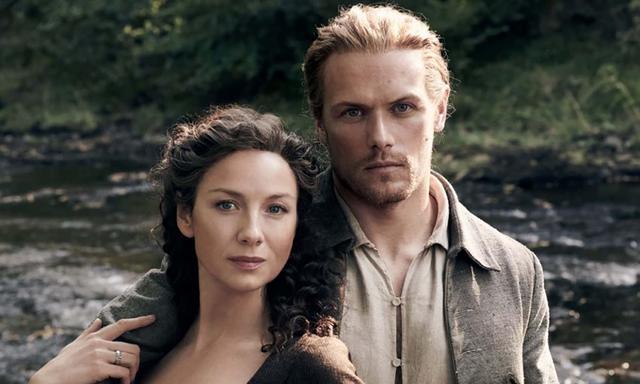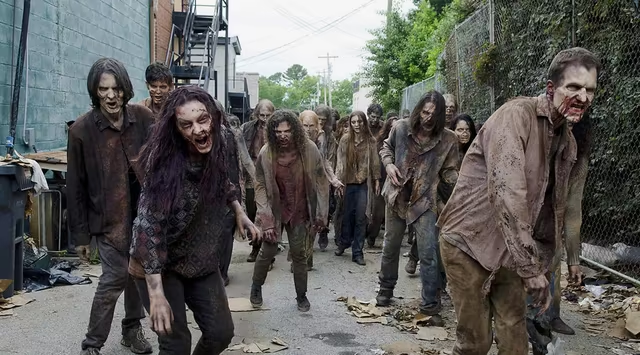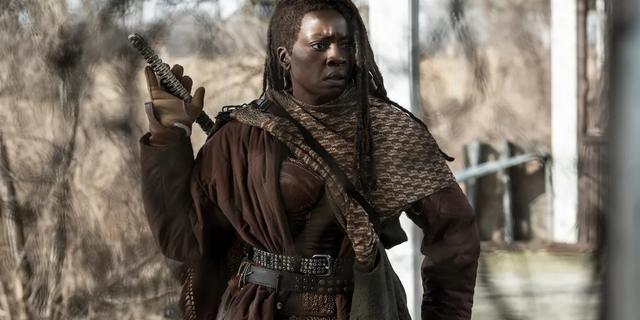If you click on a link and make a purchase we may receive a small commission. Read our editorial policy.
Batman: Dispelling the myth of the loner Dark Knight
Batman has one of the biggest superhero families in comics. Here’s why the Caped Crusader has always been a team player

As ubiquitous an icon as Batman is, the Dark Knight is many different, multi-faceted things. He’s a cold, calculating master strategist who thoroughly plans out every single contingency. He’s a stoic and silent defender who has sacrificed so much from his own personal life in service to protecting Gotham City. He’s easily the grumpiest member of the Justice League. One thing, however, that the Caped Crusader is not, is a loner.
Sure, there are plenty of depictions of Batman that paint him as a lone wolf who quietly broods in the Batcave before confronting Gotham’s nastiest supervillains as the city’s solitary last line of defense. This iteration has been reinforced by plenty of multimedia incarnations of Batman, specifically numerous celebrated feature films starring the superhero. But Batman hasn’t really been one to operate entirely on his own, a distinction that stretches back nearly to the character’s debut itself, and has only been reinforced in the 80+ years since.
Here’s how the idea of Batman being a loner took shape and has ebbed and flowed across his publication history, how multimedia adaptations of the character have either fueled or distanced themselves from this perception, and how the Bat-Family has cemented itself in the DC Universe as a found family that’s here to stay.
The myth of Batman as a loner

Bob Kane and Bill Finger introduce Batman in 1939’s Detective Comics #27 as a masked vigilante in the mold of pulp contemporaries like Zorro and The Shadow. In his initial appearances, Batman doesn’t even have his faithful butler Alfred Pennyworth, who isn’t introduced until 1943’s Batman #16 by Kane and Don Cameron, but instead largely maintains his double life alone to avoid any attachments and let fewer people in on his crime-fighting secret. In these early stories, Batman carries a pistol and has no apparent moral qualms with employing lethal force on his enemies.
While this period has been romanticized somewhat, it’s also a fairly brief moment in the character’s extensive history. In 1940’s Detective Comics #38, less than a year after Batman’s debut, Kane, Finger, and Jerry Robin introduce readers to Robin, Batman’s colorfully youthful sidekick. Enormously popular with younger readers, Robin is a constant presence with Batman moving forward, lightening the Dark Knight’s attitude considerably and even going as far as to get his own solo spinoff in the concurrent comic book title Star Spangled Comics, starting in 1947’s issue #65.
Batman being part of an active partnership, a Dynamic Duo, if you will, has been a staple of the character in his multimedia adaptations as well. Both ‘40s Batman movie serials feature Batman and Robin working together effectively as a team, with the 1948 serial going as far to title itself Batman and Robin to make this association abundantly clear. The ‘60s Batman television series and spinoff film consistently pair Bruce Wayne and Dick Grayson, bringing in Barbara Gordon as Batgirl by the third and final season. And although Batman: The Animated Series takes several cues from the Tim Burton Batman movies, which lacked a Robin, the early episodes included a college-age Dick Grayson occasionally partnering up with his mentor as Robin.
Plain and simple, the concept of Batman as a loner is a relative drop in the pond as far as his legacy goes, though there are infrequent instances where Bruce Wayne is returned to the solo crimefighter that he was when he was introduced.
Batman’s temporary return as a solo superhero

There have been attempts after the introduction of Robin to restore Batman as a more solitary crimefighter in the comic book line. When Dennis O’Neil and Neal Adams took over the main Batman ongoing series starting with 1970’s issue #224, he consciously tried to bring the character back to his grittier and more grounded roots, eschewing the campier elements that became associated with the character in the ‘50s and ‘60s. One such move is downplaying the presence of Robin during this time period.
Dick Grayson moves out to attend college during Batman comics in the ‘70s, only appearing sporadically during the period to suit up as Robin. This culminates in Dick and Bruce having a falling out, with Dick creating the new superhero mantle Nightwing and primarily associating himself with the Teen Titans rather than Batman. But even this is short-lived because Bruce soon takes in wayward Gotham teen Jason Todd to become the second Robin during Gerry Conway and Don Newton’s run on Batman in 1984.
Proving nowhere near as popular as his predecessor, Jason’s fate was left up to a phone-in fan vote in 1988’s “A Death in the Family” by Jim Starlin and Jim Aparo, with Jason ultimately killed by the Joker based on the votes. Haunted by Jason’s death, Batman becomes a more vengeful and brooding hero-- but plans for a third Robin take shape less than a year later, with Marv Wolfman and Pat Broderick creating Jason’s eventual successor Tim Drake in 1989.
A lot of seminal solo Batman stories were published in the ‘80s, including “Year One,” Arkham Asylum, and Batman: The Killing Joke, but the importance of Robin is still visible during this era. Though Bruce returns to his caped persona in The Dark Knight Returns alone initially, he quickly inspires teenager Carrie Kelley to become the latest Robin, even going as far as influencing the city’s unruly youth gangs to fight crime as the Sons of Batman. Batman’s solo turn in the ‘80s isn’t as long as one might think, further solidifying his tendency to rely on crime-fighting partners.
The cinematic bias

The idea of Batman being a lone figure taking on the most nefarious supervillains in Gotham is something reinforced by his big screen appearances. Though there were early plans to introduce Robin in 1989’s Batman and Batman Returns, they were eventually dropped, keeping the narrative focus tighter. The incredible blockbuster success of these movies establish Batman in the public eye as a solitary hero, with the comparatively mixed reception to expanding the team in the sequels Batman Forever and Batman & Robin skewing a perception that Batman is better off alone.
Similarly, Batman has no sidekick in filmmaker Christopher Nolan’s Dark Knight trilogy, though the final movie, 2012’s The Dark Knight Rises places him in a tenuous alliance with Catwoman and introduces a character literally named Robin as his successor. The DC Extended Universe tries to have its cake and it too, revealing its Batman did have a Robin some time before Batman v. Superman: Dawn of Justice, who was murdered by the Joker, leaving him an embittered loner who has to learn to trust heroes like Superman and Wonder Woman. 2022’s The Batman sidesteps this by introducing a younger Dark Knight at the start of his career, still learning the ropes and doing it alone.
However, DC Studios CEOs James Gunn and Peter Safran appear to have plans for their Batman to lean more towards the current comic book continuity, with Bruce joined by his son Damian Wayne as this cinematic universe’s Robin in the announced film The Brave and the Bold. This marks the first instance since Adam West and Burt Ward’s 1966 Batman, that a live action Caped Crusader is introduced alongside a Robin, cementing the Dynamic Duo’s importance.
Bat-family through thick and thin

The Bat-family has grown beyond a two-man partnership since 1956’s Detective #233 with the introduction of Batwoman by Edmond Hamilton and Sheldon Moldoff. Though the Bat-family’s prominence was pared down across the subsequent decade, it exploded in the ‘90s, with Nightwing regularly working with Batman and Robin, while new Batgirls and other sidekicks are brought into the fold. In the current continuity, virtually anyone who once held the mantle of Robin or Batgirl in the past are active crimefighters helping Batman in his crusade as a true found family and a close-knit team.
Other multimedia depictions have since followed suit, with Batman: The Animated Series expanding its Bat-family to include Batgirl, Nightwing, and new Robin by the final season. The immensely popular Batman: Arkham video game trilogy, starts off with a solo Batman but brings in the usual sidekicks by the second installment, Batman: Arkham City, and prominently incorporates them into the story in Batman: Arkham Knight. The Max original animated series Harley Quinn features a Bat-family already fully formed at its start, with Harley herself joining it by the third season.
There is a romantic quality to Batman being alone as he faces supervillains, it strengthens the perception of a regular man training himself through sheer force of will (and a considerable fortune) to become something greater. But Batman quickly became a story about someone lonely and hurt learning how to trust others and become better together, first with a single sidekick and then with a growing ensemble. Batman is perfectly competent on his own, but the Dark Knight knows well enough the value of allies and family to elevate him in every way.
To see the new adventures of the Dynamic Duo, Batman and Robin #1 launches Sept. 12. The new comic book series is written by Joshua Williamson and illustrated by Simone di Meo.
Todd McFarlane's Spawn is coming to "one of the biggest games on the planet" - but which one?
Follow Popverse for upcoming event coverage and news
Find out how we conduct our review by reading our review policy
Let Popverse be your tour guide through the wilderness of pop culture
Sign in and let us help you find your new favorite thing.
















Comments
Want to join the discussion? Please activate your account first.
Visit Reedpop ID if you need to resend the confirmation email.